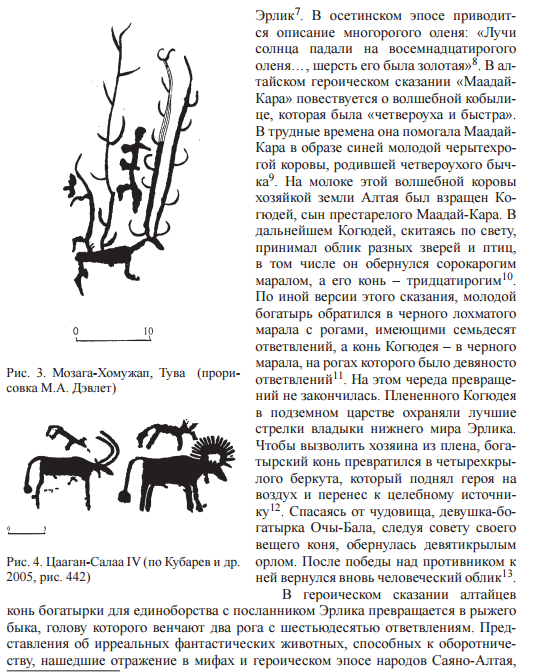
首页 - 研究交流
研究交流/ RESEARCH EXCHANGEAbstract
Images of animals with radiant discs on their heads or with exaggerated horns, or horns of fantastic outlines stand out as a specifi c group among the rock images of the Bronze and the Early Iron Age in the Sayan-Altai and Central Asia. Animals with multiplied parts of their body (many-eared, many-legged, many-horned, etc.) are also a common subject in the rock art.
Really existing species of animals and stylized conventional symbols (the signs of the day heavenly body) merge in a single syncretic image. There are images of animals with horns of the most bizarre outlines, which have no prototypes in real life. Some of them resemble a ladder – the semantic equivalent of a shamanic world tree, the ladder by which the shaman, according to the beliefs of the Siberian aborigines, could rise to the upper world. The pictures of animals with fantastic features are known to include those forming images by multiplying individual parts of the body. These are many-horned, many-eared, etc. zoomorphic creatures. Similar surreal images are also found in the folklore of the indigenous peoples of North and Central Asia. These are the chthonic creatures of the lower world or the magical characters that personify the light heavenly powers. Numerous mythological stories tell about the transformation of heroes and their animal assistants into many-winged, many-horned, many-legged characters that have extraordinary incredible strength, speed, and the ability to overcome the boundaries of the universe. Rock images is a petrifi ed folklore; petroglyphs have numerous parallels in metal items, especially in the art of the Scythian-Siberian animal style, which often employed the images of fantastic animals, including those with hypertrophied horns, ears, etc.
Keywords
Sayan-Altai, Central Asia, rock art, epic, petroglyphs


